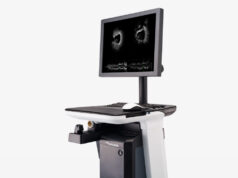
The Society for Cardiovascular Angiography and Interventions (SCAI) and the American Society of Echocardiography (ASE) have published a joint statement in Catheterisation and Cardiovascular Interventions and the Journal of the American Society of Echocardiography (JASE) to outline concerns about a recently published guideline for cardiovascular imaging in patients who present to the emergency department with chest pain. They claim that the guideline may “adversely impact the care of patients”.
James C Blankenship (Department of Cardiology, Geisinger Medical Center, Danville, USA) and Susan E Weigers (Lewis Katz School of Medicine at Temple University Philadelphia, USA), the respective presidents of SCAI and ASE, write that their societies declined to endorse the Appropriate utilisation of cardiovascular imaging in emergency department patients with chest pain document (which was published in the Journal of the American College of Cardiology in January this year) because they felt “it would adversely impact the care of patients both by suggesting that entirely guideline-based care is ‘less than appropriate’ and by inviting payers to limit access to tests are labelled M for may be appropriate in clinical scenarios where other tests are labelled A for appropriate.” They add that their societies could not voice their concerns about the document—which is endorsed by the American Heart Association (AHA) and the American College of Cardiology (ACC) among others—in a letter to JACC because such letters “are instead referred to the appropriate use criteria (AUC) writing committee for consideration in the next version of the AUC document”. Therefore, Blankenship and Weigers note that SCAI/ASE decided to take the “unusual step” of publishing their concerns inCatheterisation and Cardiovascular Interventions (which is the official journal of SCAI) and in JASE (the official journal of ASE).
According to the authors, one of the concerns with the document—“and perhaps the most important”—is that it does not include many common clinical scenarios. “As a result, the scenarios that are included have ratings that are inappropriate for significant numbers of patients,” Blankenship and Wiegers claim. For example, they explain that the document advises that coronary angiography is “rarely appropriate” (and instead recommend a non-invasive study) in several scenarios involving patients with a significant likelihood of active coronary artery disease. However, the authors note that the 2014 ACC/AHA guidelines for non-ST segment elevation acute coronary syndromes give “early if not immediate cardiac catheterisation” a class I recommendation for patients presenting with chest pain that is suggestive of ongoing ischaemia and infarction. Furthermore, Blankenship and Wiegers argue that in patients with known coronary artery disease, non-invasive imaging tests (eg. computed tomography angiography) may be unable “distinguish new from old pathology, and so will have limited utility in determining the best care plan.” They add that in these cases, immediate angiography “is likely to be a more efficient and effective diagnostic approach.”
Another issue Blankenship and Wiegers say that their societies have with the AUC document is that its writing panel did not include a member from either society—“whose members commonly consult on these patients in the emergency department”—and “nor to our knowledge, any physician who routinely performs invasive angiography”. Furthermore, they note that the rating panel of the document only included one member of the ASE and none from SCAI. “Thus our societies are concerned that the clinical scenarios and ratings assigned to them fail to integrate the value of both invasive and non-invasive imaging, may not adequately represent real-life patients, and do not represent current standards of practice. Indeed, it is conceivable that these ratings lead to substandard care for some patients,” the authors write.
Concluding their statement, they say that SCAI and ASE felt “obligated” to not endorse the AUC document because they say “it is equally important” to advocate for patients to receive procedures that are beneficial as it is to avoid procedures that are not beneficial. Blankenship and Wiegers surmise: “A better course would be to reconvene the process and start over to get ‘appropriate’ AUC’s rather than ‘inappropriate’ AUC’s that could negatively influence patient safety and well-being.”
They told Cardiovascular News: “As most of the situations that concern SCAI and ASE are covered by guidelines that have been created with full participation of the relevant societies and endorsed by them, we suggest that clinicians follow those guidelines.”
Responding to the editorial, James Udelson (Division of Cardiology and the CardioVascular Center, Tufts Medical Center, Tufts University School of Medicine, Boston, USA)—a member of the writing committee for the AUC—said: “The process for selecting members for the various panels was transparent and attempts were made to be inclusive of all stakeholder societies, specifically for the Rating and Review panels. Each society had opportunities at several time points for comments on the ratings and text of the document. While we recognise that ASE and SCAI has some issues with some of the ratings that could not be fully resolved, the rating process was similar to that done for previous AUC documents. The ’M*’ rating was new for this document, but was meant to be a point of transparency to denote that the rating panel members could not come to a consensus for a rating for a particular scenario, despite discussions and additional rounds of ratings and review of the literature. To us it was clear that such an occurrence suggested that a test may very well be appropriate, and thus deserved an ’M’ category rating. Finally, it is important to note that while ASE and SCAI did not endorse the document, 14 other societies did endorse the final document.”










